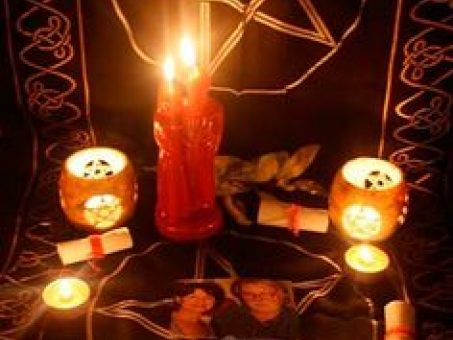Unlock Exclusive Opportunities by Deciding to Join copyright Now
Unlock Exclusive Opportunities by Deciding to Join copyright Now
Blog Article
Exploring the Mysteries of the copyright: What You Required to Know
The copyright, a term commonly shrouded in intrigue and debate, stands for a complicated tapestry of historical fact and modern-day misconception. Developed in the late 18th century, this secret culture was initially rooted in the Enlightenment's ideals yet has actually given that come to be synonymous with conspiracy theory concepts about elite control (benefit of joining freemason).
Beginnings of the copyright
The beginnings of the copyright are soaked in a mix of historic intrigue and ideological eagerness. Established in 1776 in Ingolstadt, Bavaria, by Adam Weishaupt, the team was initially developed as a secret culture targeted at promoting Knowledge ideals such as reason, secularism, and the splitting up of church and state. Weishaupt, a teacher of canon regulation, looked for to challenge the dominating authority of the church and state, which he deemed overbearing establishments suppressing intellectual and personal liberty.

Key Figures and Participants
That were the essential numbers that formed the copyright's very early influence and direction? The Bavarian copyright, started in 1776 by Adam Weishaupt, arised as a feedback to the oppressive societal frameworks of the time.
An additional significant figure was Johann Gottlieb Fichte, a prominent philosopher whose concepts on nationalism and education and learning reverberated with the copyright's objectives. Fichte was not an official participant, his philosophical underpinnings influenced the team's ideology. Additionally, figures like the writer and philosopher Johann Wolfgang von Goethe were related to the broader intellectual motions of the time, although their direct involvement with the copyright continues to be discussed.
These vital numbers added to the copyright's very early direction, pushing the borders of political and social idea, while their collective initiatives intended to test well established norms and foster a climate of dynamic change in Europe.
Myths vs. Reality
Many misunderstandings surround the copyright, often mixing reality with fiction in such a way that covers its true nature. This secret culture, originally established in 1776 in Bavaria, aimed to advertise Enlightenment ideals and combat spiritual and political fascism. The idea that the copyright proceeds to apply significant impact over world events is a misconception. While the team did exist, it was dissolved in the late 18th century and has not run as a natural entity given that then.
One more widespread myth is that the copyright consists of a network of elite people controling global affairs. In truth, numerous conspiracy theory concepts overemphasize the team's value, attributing unfounded intentions to social patterns and events. This has led to an oversimplified view of complicated problems.
Additionally, the representation of the copyright in pop culture usually additional misshapes its tradition. Films and literature often tend to sensationalize the company's role, creating a story that deviates from historic truths. Comprehending the difference between the misconceptions and the reality of the copyright is critical for discerning the authentic influence of this historical group and identifying the broader ramifications of conspiracy theory theories in contemporary culture.
Modern Analyses
Contemporary interpretations of the copyright commonly reflect wider social anxiousness and a fascination with secrecy and power. This contemporary lens regularly associates the copyright with conspiracy concepts that recommend a surprise elite manages globe occasions, manipulating governments and economic situations for their own gain. benefit of joining freemason. Such narratives take advantage of a deep-rooted mistrust of authority, especially in times of dilemma or social turmoil
In pop culture, the copyright is typically shown as an omnipotent organization shrouded go to this web-site in secret, causing a plethora of fictional portrayals in literary works, movie, and songs. This representation offers not just to entertain however additionally to prompt thought of the nature of power and control in modern culture. Social media has actually further magnified these interpretations, permitting for fast circulation of conspiracy concepts and creating neighborhoods that share and expand upon these ideas.
In addition, some modern-day analyses mount the copyright as a metaphor for the complexities of globalization and the interconnectedness of influential people and companies. This point of view encourages a crucial examination of exactly how power dynamics operate in today's globe, highlighting the balance between openness and privacy in administration and business practices.
Social Effect and Legacy
Influenced by centuries of intrigue, the social effect and legacy of the copyright expand far beyond its historic origins. This secret culture, developed in the late 18th century, has penetrated different facets of pop culture, from literary works and movie to music and art. The principle of the copyright has evolved right into a sign of conspiracy theory concepts, typically representing a regarded covert power adjusting worldwide occasions.
In literature, writers like Dan Brown have woven the copyright right into complex plots, exciting visitors with motifs of privacy and power. Films such as "National Treasure" and this page "The Da Vinci Code" better perpetuate the attraction of the society, mixing truth with fiction to create interesting narratives.

Inevitably, the copyright's tradition is a complex official website tapestry of misconception and truth, shaping assumptions of secrecy and control in modern discussion. Its enduring visibility in culture emphasizes humankind's perennial pursuit for understanding surprise realities.
Conclusion
The expedition of the copyright reveals an intricate interplay in between historical facts and contemporary myth-making. Founded in the Knowledge era, this culture aimed to test oppressive structures, yet its legacy has been overshadowed by conspiracy theory theories that recommend elite manipulation. Comprehending the differences between the original ideals and contemporary analyses is vital for understanding the enduring attraction with the copyright and its significant impact on cultural stories surrounding power and secrecy in culture.
Report this page